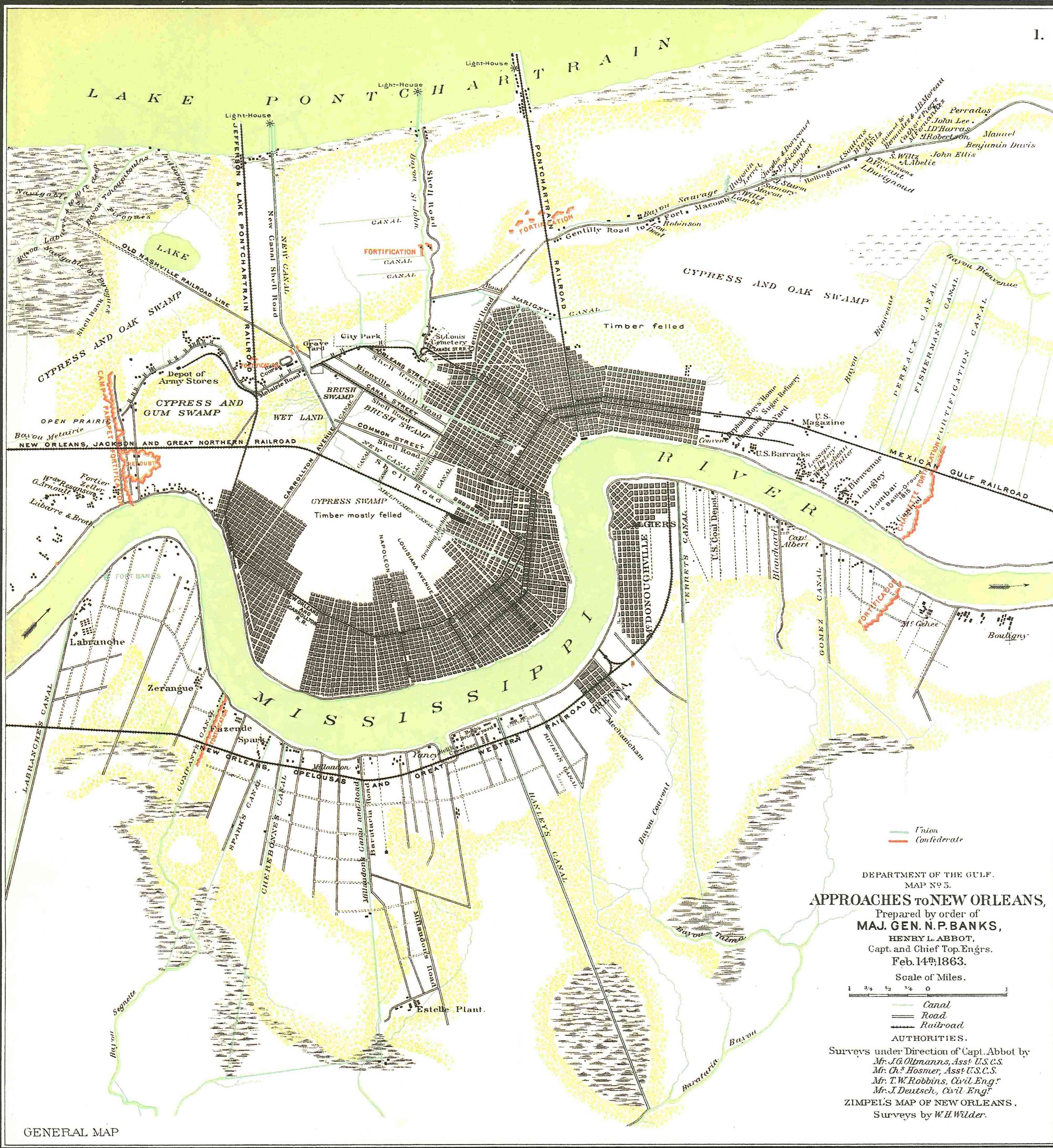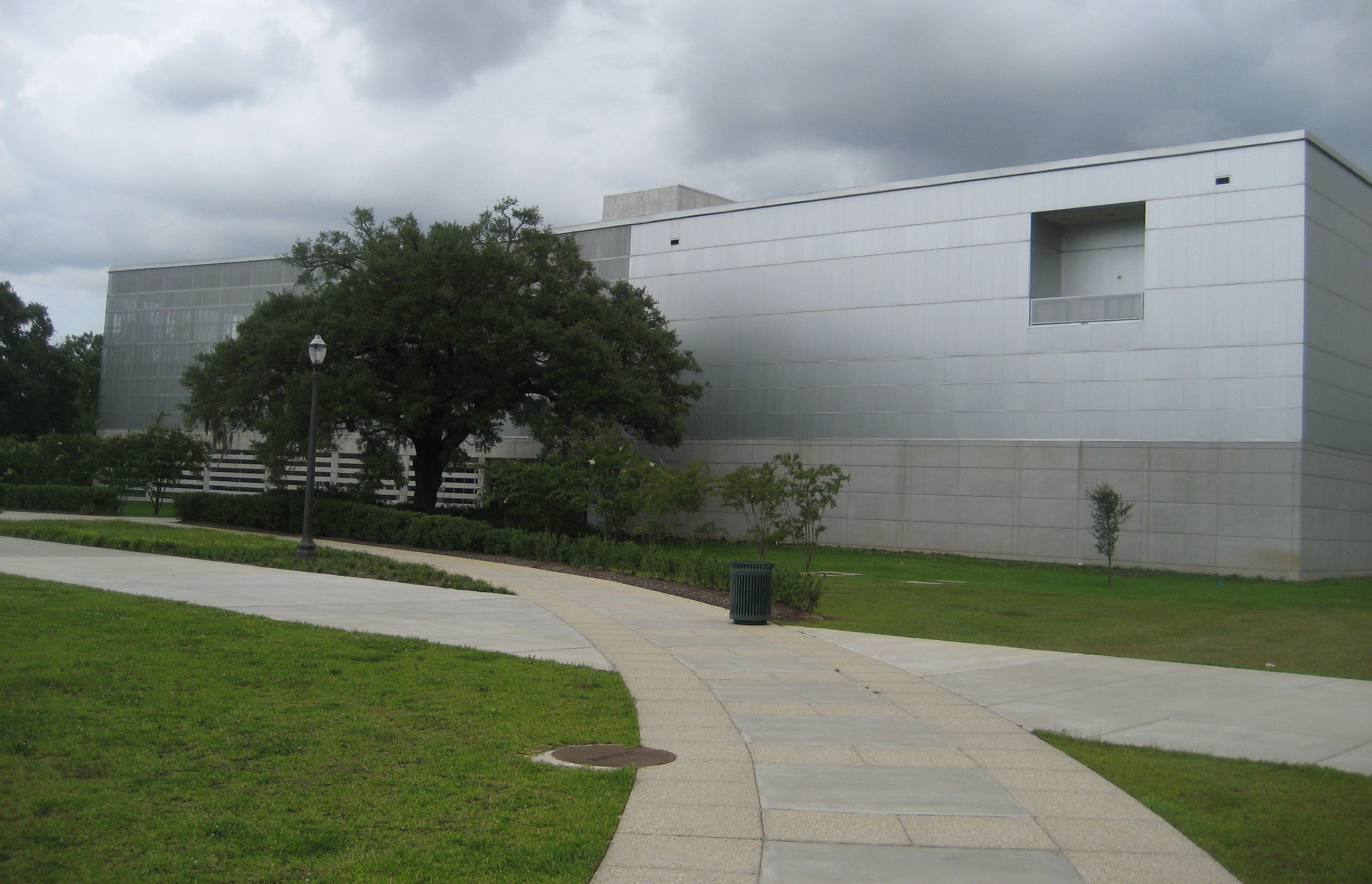|
Bayou St. John Submarine
The Bayou St. John Confederate Submarine is an early military submarine built for use by the Confederate States of America during the American Civil War. Description The submarine is constructed of riveted iron, long, wide and deep, with a hand-cranked propeller. History No period documentation for the submarine is known to exist, and its original name and many details about it remain unknown. The submarine was rediscovered in 1878 during the dredging of Bayou St. John where it joins Lake Pontchartrain in New Orleans, Louisiana, where the submarine was presumably scuttled to prevent it falling into Union hands after the capture of New Orleans. It was put on display beside the Bayou at Spanish Fort Amusement Park as a curiosity, incorrectly identified as the Confederate submarine ''Pioneer''. The traditional identification as the ''Pioneer'' was not questioned seriously until historical research in the late 20th century showed the ''Pioneer'' to be of a different design tha ... [...More Info...] [...Related Items...] OR: [Wikipedia] [Google] [Baidu] |
Spanish Fort, New Orleans
Spanish Fort, also known as Old Spanish Fort, Fort St. Jean, and Fort St. John ( es, Fuerte de San Juan del Bayou), is a historic place in New Orleans, Louisiana, formerly the site of a fort and later an amusement park. Prehistory Archaeological investigations have discovered that the fort location was a site of the Pre-Columbian Marksville culture dating back to circa 300 CE, with continued occupation afterwards. A large shell midden was used as the base under the early Colonial fort The fort The Colonial era fort protected the |
Louisiana In The American Civil War
Louisiana was a dominant population center in the southwest of the Confederate States of America, controlling the wealthy trade center of New Orleans, and contributing the French Creole and Cajun populations to the demographic composition of a predominantly Anglo-American country. In the antebellum period, Louisiana was a slave state, where enslaved African Americans had comprised the majority of the population during the eighteenth-century French and Spanish dominations. By the time the United States acquired the territory (1803) and Louisiana became a state (1812), the institution of slavery was entrenched. By 1860, 47% of the state's population were enslaved, though the state also had one of the largest free black populations in the United States. Much of the white population, particularly in the cities, supported slavery, while pockets of support for the U.S. and its government existed in the more rural areas. Louisiana declared that it had seceded from the Union on Ja ... [...More Info...] [...Related Items...] OR: [Wikipedia] [Google] [Baidu] |
Submarines Of The Confederate States Navy
A submarine (or sub) is a watercraft capable of independent operation underwater. It differs from a submersible, which has more limited underwater capability. The term is also sometimes used historically or colloquially to refer to remotely operated vehicles and robots, as well as medium-sized or smaller vessels, such as the midget submarine and the wet sub. Submarines are referred to as ''boats'' rather than ''ships'' irrespective of their size. Although experimental submarines had been built earlier, submarine design took off during the 19th century, and they were adopted by several navies. They were first widely used during World War I (1914–1918), and are now used in many navies, large and small. Military uses include attacking enemy surface ships (merchant and military) or other submarines, and for aircraft carrier protection, blockade running, nuclear deterrence, reconnaissance, conventional land attack (for example, using a cruise missile), and covert insertion of spe ... [...More Info...] [...Related Items...] OR: [Wikipedia] [Google] [Baidu] |
New Orleans In The American Civil War
New Orleans, Louisiana, was the largest city in the South, providing military supplies and thousands of troops for the Confederate States Army. Its location near the mouth of the Mississippi made it a prime target for the Union, both for controlling the huge waterway and crippling the Confederacy’s vital cotton exports. In April 1862, the West Gulf Blockading Squadron under Captain David Farragut shelled the two substantial forts guarding each of the river-banks, and forced a gap in the defensive boom placed between them. After running the last of the Confederate batteries, they took the surrender of the forts, and soon afterwards the city itself, without further action. The new military governor, Major General Benjamin Butler, proved effective in enforcing civic order, though his methods aroused protest everywhere. One citizen was hanged for tearing down the US flag, and any woman insulting a Federal soldier would be treated as a prostitute. Looting by troops was also rife, th ... [...More Info...] [...Related Items...] OR: [Wikipedia] [Google] [Baidu] |
Capitol Park Museum - Baton Rouge
The Capitol Park Museum is a branch of the Louisiana State Museum located at 660 N. 4th Street, Baton Rouge, Louisiana. There are two permanent exhibits on the history and culture of Louisiana. The building was designed by New Orleans-based design studio Eskew Dumez Ripple and exhibits were created by Christopher Chadbourne & Associates. Notable objects include the Bayou St. John submarine and Louis Armstrong's childhood bugle The bugle is one of the simplest brass instruments, normally having no valves or other pitch-altering devices. All pitch control is done by varying the player's embouchure. History The bugle developed from early musical or communication .... References External links Louisiana State Museum - Baton Rouge Museums in Baton Rouge, Louisiana History museums in Louisiana Atchafalaya National Heritage Area Louisiana State Museum Tourist attractions in Baton Rouge, Louisiana {{BatonRougeLA-struct-stub ... [...More Info...] [...Related Items...] OR: [Wikipedia] [Google] [Baidu] |
Baton Rouge, Louisiana
Baton Rouge ( ; ) is a city in and the capital of the U.S. state of Louisiana. Located the eastern bank of the Mississippi River, it is the parish seat of East Baton Rouge Parish, Louisiana's most populous parish—the equivalent of counties in other U.S. states. Since 2020, it has been the 99th-most-populous city in the United States and the second-largest city in Louisiana, after New Orleans; Baton Rouge is the 18th-most-populous state capital. According to the 2020 United States census, the city-proper had a population of 227,470; its consolidated population was 456,781 in 2020. The city is the center of the Greater Baton Rouge area—Louisiana's second-largest metropolitan area—with a population of 870,569 as of 2020, up from 802,484 in 2010. The Baton Rouge area owes its historical importance to its strategic site upon the Istrouma Bluff, the first natural bluff upriver from the Mississippi River Delta at the Gulf of Mexico. This allowed development of a business qu ... [...More Info...] [...Related Items...] OR: [Wikipedia] [Google] [Baidu] |
The Presbytere
The Presbytère is an architecturally important building in the French Quarter of New Orleans, Louisiana. It stands facing Jackson Square, adjacent to the St. Louis Cathedral. Built in 1813 as a matching structure for the Cabildo, which flanks the cathedral on the other side, it is one of the nation's best examples of formal colonial Spanish architecture (with many neo-Renaissance elements). It was designated a National Historic Landmark in 1970, and is now a property of the Louisiana State Museum. Description The Presbytère is located on the northeast side of Jackson Square, between the cathedral and St. Ann Street. It is a two-story brick building, originally built with a flat roof that had a balustrade topped by urns. Its ground floor has a nine- bay open arcade of elliptical arches, with pilastered corners. The upper level also has arched openings, all articulated by pilasters, with multipane windows. The center three bays on both levels have engaged columns on either s ... [...More Info...] [...Related Items...] OR: [Wikipedia] [Google] [Baidu] |
Jackson Square (New Orleans)
Jackson Square is a historic park in the French Quarter of New Orleans, Louisiana. It was declared a National Historic Landmark in 1960, for its central role in the city's history, and as the site where in 1803 Louisiana was made United States territory pursuant to the Louisiana Purchase. In 2012 the American Planning Association designated Jackson Square as one of the Great Public Spaces in the United States. Design and development Jackson Square was designed after the famous 17th-century ''Place des Vosges'' in Paris, France, by the architect and landscape architect Louis H. Pilié. Jackson Square is roughly the size of a city block (GPS +29.9575 -90.0630). Sculptor Clark Mills' equestrian statue of Andrew Jackson (a recasting of the Washington, D.C., statue), hero of the Battle of New Orleans and seventh U.S. president for whom the former military parade ground was named, was erected in 1856. Iron fences, walkways, benches, and Parisian-style landscaping remain intact fro ... [...More Info...] [...Related Items...] OR: [Wikipedia] [Google] [Baidu] |
Louisiana State Museum
The Louisiana State Museum (LSM), founded in New Orleans in 1906, is a statewide system of National Historic Landmarks and modern structures across Louisiana, housing thousands of artifacts and works of art reflecting Louisiana's legacy of historic events and cultural diversity. Overview The Louisiana State Museum system has its beginnings in the Louisiana Purchase Exposition in 1904 at St. Louis, Missouri. A large number of pertinent artifacts were gathered to be displayed at Louisiana's exhibition at this fair. After the Exposition, it was decided that this collection should be stored, expanded, and displayed. The Louisiana State Museum was established in 1906 to fulfill this role. The Presbytere and the Cabildo buildings, located on either side of the St. Louis Cathedral on Jackson Square, were some of the first properties that the Louisiana State Museum was lodged in. The Louisiana State Museum now has thirteen properties around the state: historic structures, museums open t ... [...More Info...] [...Related Items...] OR: [Wikipedia] [Google] [Baidu] |
Concrete
Concrete is a composite material composed of fine and coarse aggregate bonded together with a fluid cement (cement paste) that hardens (cures) over time. Concrete is the second-most-used substance in the world after water, and is the most widely used building material. Its usage worldwide, ton for ton, is twice that of steel, wood, plastics, and aluminum combined. Globally, the ready-mix concrete industry, the largest segment of the concrete market, is projected to exceed $600 billion in revenue by 2025. This widespread use results in a number of environmental impacts. Most notably, the production process for cement produces large volumes of greenhouse gas emissions, leading to net 8% of global emissions. Other environmental concerns include widespread illegal sand mining, impacts on the surrounding environment such as increased surface runoff or urban heat island effect, and potential public health implications from toxic ingredients. Significant research and development is ... [...More Info...] [...Related Items...] OR: [Wikipedia] [Google] [Baidu] |






